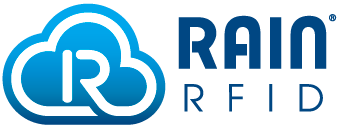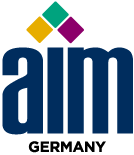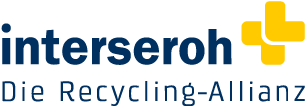RFID and
NFC technology
Connecting brands & consumers the smart way
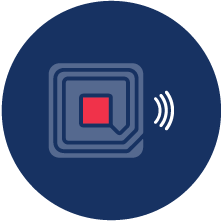
RFID
(Radio-Frequency Identification) technology uses electromagnetic coupling in the RF spectrum to uniquely identify objects, animals, or people. It is increasingly replacing barcodes in various industries.
A RFID system comprises three components: a reader with a connected antenna, a transponder (the passive Tag) and a software application to process the data. The reader sends a RF signal (energy and data) via the connected antenna to activate the passive Tag, which then transmits data back. This data triggers actions, from opening access gates to database interactions. The range of RFID systems extends from a few centimeters (high frequency band) up to 10 meters in Logistic applications (Ultra high frequency band).
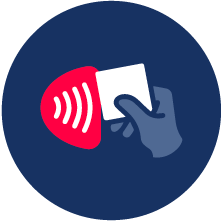
NFC
(Near Field Communication) is a standardized wireless data interface and compatible with RFID (e.g. ISO/IEC 14443).
A passive NFC Tag can be powered by a reader, e.g. a smartphone, to read stored data from the NFC Tag chip memory via a distance of few centimeters.

Advantages of
RFID and NFC
-
No line-of-sight
The major advantage of all kinds of RFID/NFC systems is that they work contactless, require no line of sight and multiple transponders can be measured simultaneously (bulk reading).
-
Robust system
Smart RFID/NFC labels can be read through a whole number of substances, e.g. snow, fog, ice, paint, dirt, and in difficult constructional scenarios where barcodes or other optical reading technologies would not be used at all.
-
Speed of a RFID system
RFID transponders can be read at remarkable speed even in difficult conditions, and in most cases respond in less than 100 milliseconds.
-
Universal interoperability with NFC devices
A passive NFC Tag can be read by NFC devices like smartphones, operating with and without apps.
-
High Security levels
NFC Tags can be used for brand protection by offering advanced features like originality signature, static or dynamic memory protection, along with AES-128 cryptography for secure authentication.
-
Anti-tampering and refill fraud protection
Special variants of NFC Tags come with electronic opening status detection and passively power sensing capabilities.
Technical Data
-
RFID Tags and labels: We offer passive RFID Tags and labels for HF RFID (13.56 MHz, ISO/IEC 15693, ISO/IEC 14443) and RAIN (UHF) RFID (860 – 960 MHz, ISO/IEC 18000-6C, EPC Class1 Gen2)
-
Converting: On our machines we convert RFID inlays into your product labels in a fast reel-to-reel process. Each RFID label is tested by reliable test and measurement equipment on our machines to guarantee operability of each RFID chip.
-
Imprint & Encoding: We program several types of RFID chips on our high-speed encoding machines, creating the interface to software solutions or enabling predefined functionalities.
-
Systems: Benefit from our long-time experience in RFID. We offer and select the right reader, handheld or printer for your RFID application.
-
SaaS: Our secure Cloud Platform provides a fully end-to-end process for many RFID and NFC applications like, ID Generation according to GS1 and ISO standards, imprint & encoding, track & trace, inventory, incoming and outgoing goods, device management or context specific redirects on item level including GS1 Digital Link Resolver.
Our Sustainable Solutions
The sustainable way to track & trace products along the supply chain.
Eco revolution for IDentification
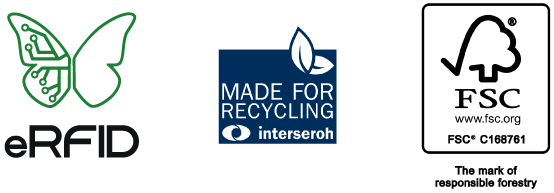
eRFID are recyclable paper-based RFID antennas for RFID labels, certified by interseroh: “made for recycling”.

Advantages of
eRFID
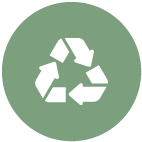
Fully recycable
eRFID antennas, and paper-based inlays are certified by interseroh – made for recycling, and therefore contribute to the circularity of scarce resources, and corporate sustainability goals.
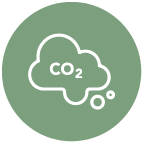
Up to 90% lower CO2 footprint
Digital production of eRFID allows the production of antennas in close proximity to our clients and partners, worldwide. Therefore, allowing highly scalability and an optimized carbon footprint.
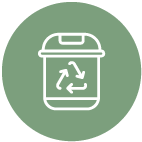
Up to 70% less waste
Thanks to unique digital production capabilities of All4Labels, processes cause up to 70% less waste along the supply chain, compared to conventional RFID antennas and inlays.
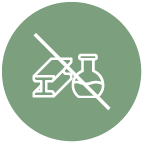
Free from heavy metals and etching chemicals
0% hazardous substances. Only three ingredients: Paper, Glue, Aluminium.

Plastic free
Our paper base material is FSC® certified.
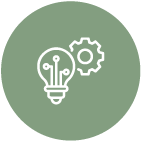
Cutting-edge performance
The laser technology produces industry standard quality antennas, the basis for ARC certified Inlays.
Technical Data
| Technology |  |
Printed conductive ink |
Thin-film aluminium |
Etched aluminium |
|---|---|---|---|---|
| Performance – high reading range |
H | M | M | H |
| Low CO2 footprint | H | H | H | L |
| Low Hazardous substances (during Production) |
H | M | H | L |
| Low usage of Plasticparts | H (zero) | H | M | H |
| High Recycling rate | H* | H | M | L |
| Low Error rate / complaints | H | M | M | L |
| High Delivery reliability (production capacity) |
H | M | M | H |
* Interseroh "made for recycling" study
H - High/very high fullfilment
M - Medium fullfilment
L - Low/no fullfilment
Solutions
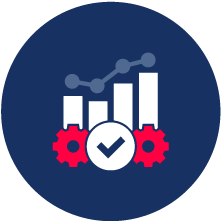
- Automated cycle counting
- Accurate product information
- Improved replenishment planning and ordering
- Automated restock or pick notifications for employees
- Efficient and accurate self-check-out

- Automated asset protection
- Brand protection and anti-counterfeiting
- Anti-tampering and refill fraud protection
- Document authentication

- Enables digital experiences
- Personalized recommendations and cross-selling trigger marks
- Augmented reality content experiences
In Standards we trust
Thanks to a global partner network, we offer industry standards according to our customers' needs.

You need to load content from reCAPTCHA to submit the form. Please note that doing so will share data with third-party providers.
More Information

